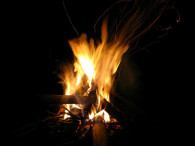Most of us don’t have to risk life and death daily, but we may be dying a slow death. If we feel we’re changing in ways we don’t like, or seeing things in the world that make us feel sorrowful, then we need time to think about this. We need time to think about what we might do and where we might start to change things. We need time to develop clarity and courage. If we want our world to be different, our first act needs to be reclaiming time to think. Nothing will change for the better until we do that. Margaret Wheatley in Turning to One Another
In my conversations with teachers about what they’re still able to do that they believe is good for their kids, they almost always refer to their lowest moments as well. Hearing their stories has led me to think about when the balance tips–what is the point where the fire of your commitment finally dies? What keeps it going no matter what? This is my next question to teachers. I predict there will be many ways to keep the fire going.
I offer this poem that we often share in educational circles as one of the elements that we can include in our lives in order to keep going.
Fire
Judy Brown
What makes a fire burn
is space between the logs,
a breathing space.
Too much of a good thing,
too many logs
packed in too tight
can douse the flames
almost as surely
as a pail of water would.
So building fires
requires attention
to the spaces in between,
as much as to the wood.
When we are able to build
open spaces
in the same way
we have learned
to pile on the logs,
then we can come to see how
it is fuel, and absence of the fuel
together, that make fire possible.
We only need to lay a log
lightly from time to time.
A fire
grows
simply because the space is there,
with openings
in which the flame
that knows just how it wants to burn
can find its way.
photo: Oro, Ann. 2009flames.jpg. June 13, 2008. Pics4Learning. 22 May 2015 <http://pics.tech4learning.com>

